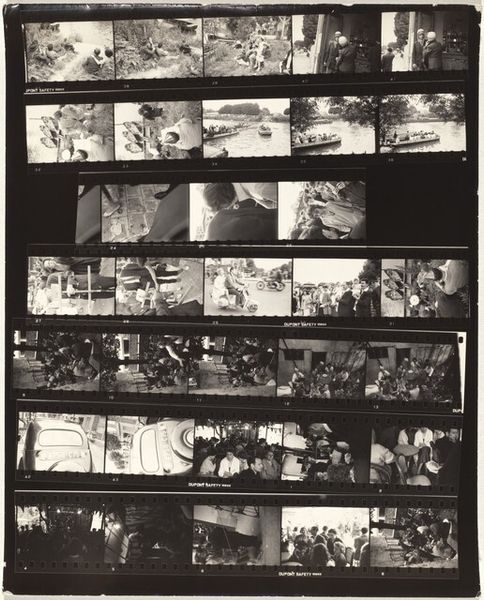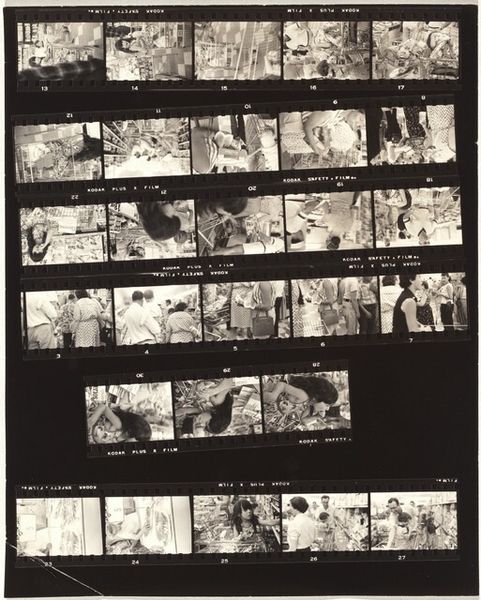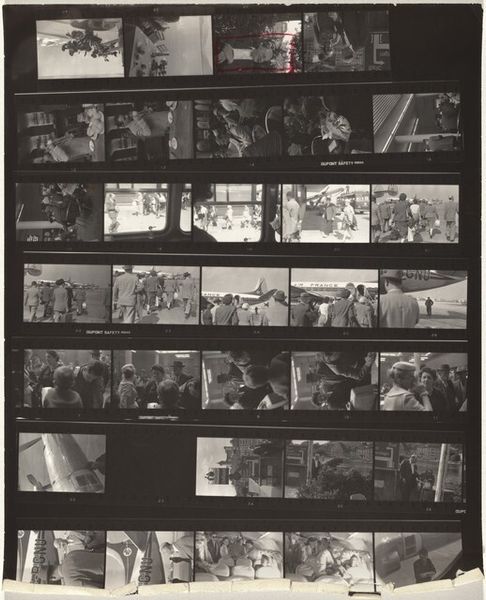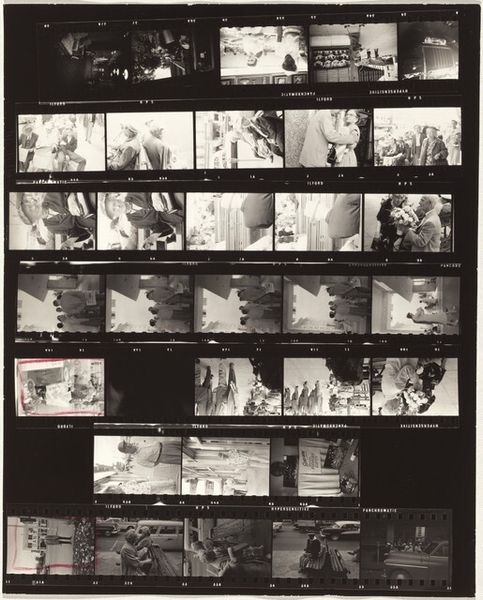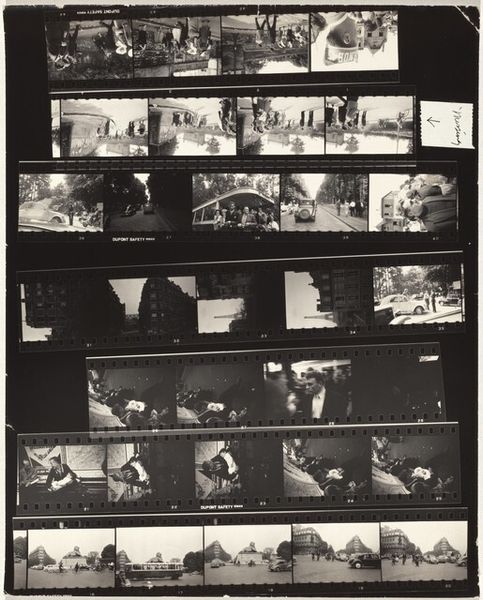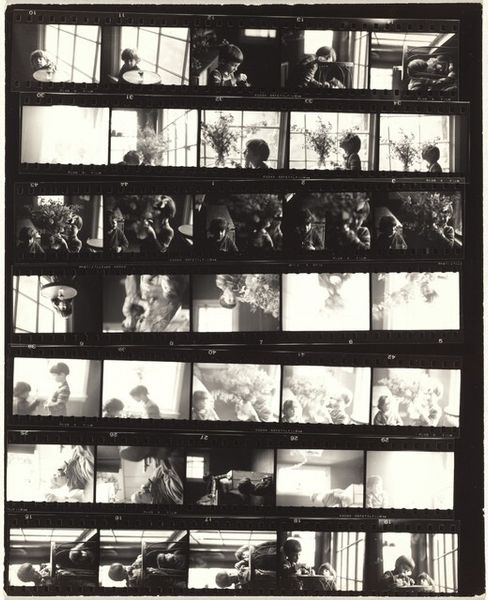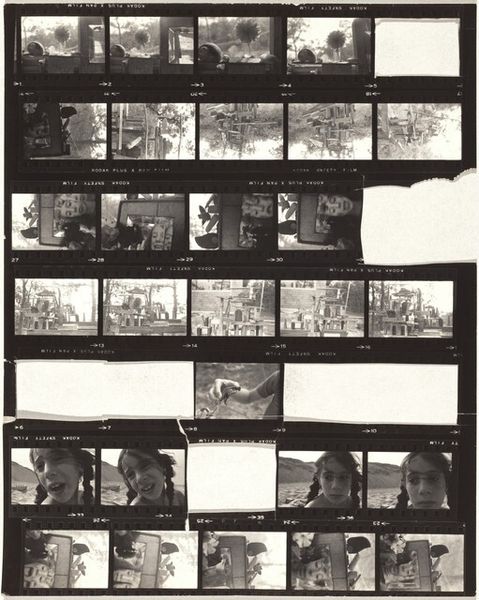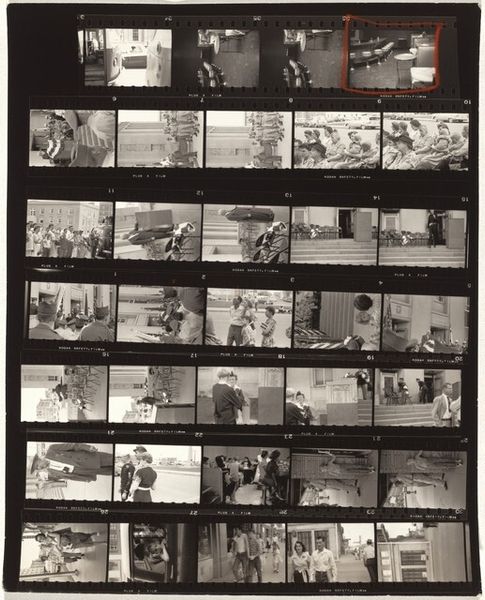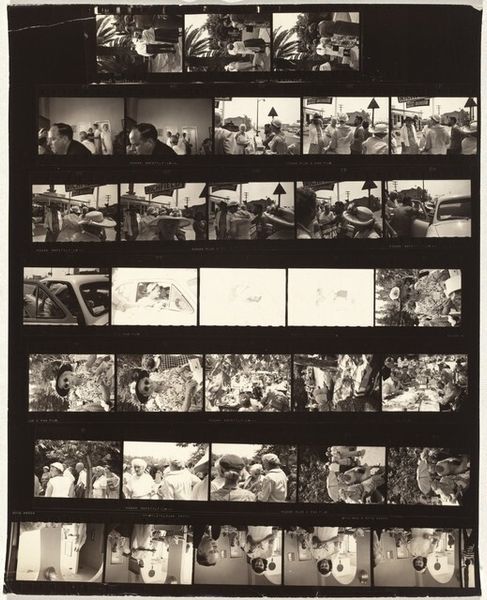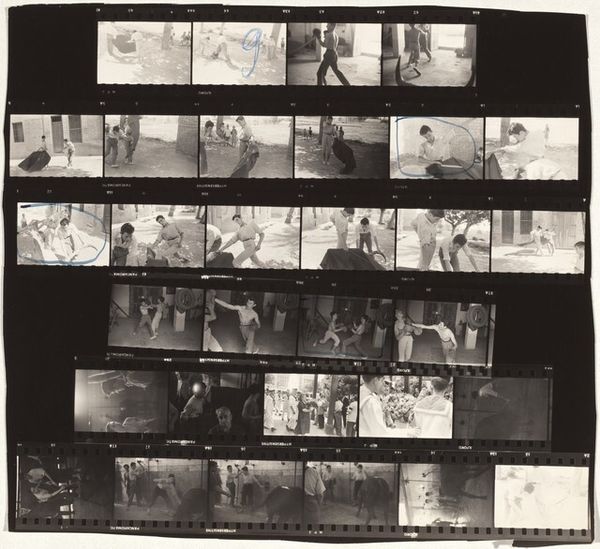
photography, gelatin-silver-print
#
film photography
#
wedding photography
#
ceremony
#
warm monochrome
#
archive photography
#
street-photography
#
photography
#
couple photography
#
gelatin-silver-print
#
monochrome photography
#
realism
#
monochrome
Dimensions: overall: 29.8 x 23.9 cm (11 3/4 x 9 7/16 in.)
Copyright: National Gallery of Art: CC0 1.0
Curator: This gelatin-silver print, “Italy—Early Europe 5,” was created by Robert Frank in 1949. What's your first take on this striking example of film photography? Editor: I'm immediately drawn to the raw texture and rhythm created by the grid. The overall tonal range—those subtle shades of grey—really amplify the intimate feeling, yet somehow, the collection still maintains a fragmented aesthetic. Curator: Frank was adept at capturing emotional truth and the everyday lived experience. Here we have what seems like strips of film documenting children playing outdoors, in the street and even some wedding imagery. The children appear joyful but some scenes carry a heavy emotional resonance. What elements support that atmosphere for you? Editor: Definitely the repetition. Those rectangular frames within frames offer a sense of voyeurism and repetition with variation. The contrast between the candid play and structured composition creates tension. See how certain shapes—the children’s faces—mirror themselves in each frame. It gives you the feeling of a visual echo, linking different moments and hinting at larger cyclical patterns. Curator: Absolutely. It echoes back to a long history. Photography, since its inception, has tried to grasp the past—offering proof that something existed. Here, there are moments, individual images that encapsulate universal themes like youth and togetherness. There is a definite visual language emerging as Frank invites viewers into these lives. Editor: Right, I see that language primarily emerging from the interplay between form and subject, each tiny little photograph becoming a morpheme. Look, the scratches and dust spots act almost as punctuation marks, emphasizing the passing of time. Frank has masterfully used material constraints as part of the aesthetic narrative. Curator: In many ways, it becomes a historical text in its presentation. Frank captures this continuity that links to ancient societal symbols, rituals that continue through generations in secular forms. His framing acknowledges the continuity, the culture's resilience. Editor: This piece made me reflect on the photographer's unique role. Frank isn't simply recording a scene, but framing time in discrete doses and giving a peek into the way individual lives form within broader cultural scripts. Curator: For me, this work serves as a profound meditation on memory and experience—it gives us the everyday in fragments.
Comments
No comments
Be the first to comment and join the conversation on the ultimate creative platform.
